- News
- Reviews
- Bikes
- Accessories
- Accessories - misc
- Computer mounts
- Bags
- Bar ends
- Bike bags & cases
- Bottle cages
- Bottles
- Cameras
- Car racks
- Child seats
- Computers
- Glasses
- GPS units
- Helmets
- Lights - front
- Lights - rear
- Lights - sets
- Locks
- Mirrors
- Mudguards
- Racks
- Pumps & CO2 inflators
- Puncture kits
- Reflectives
- Smart watches
- Stands and racks
- Trailers
- Clothing
- Components
- Bar tape & grips
- Bottom brackets
- Brake & gear cables
- Brake & STI levers
- Brake pads & spares
- Brakes
- Cassettes & freewheels
- Chains
- Chainsets & chainrings
- Derailleurs - front
- Derailleurs - rear
- Forks
- Gear levers & shifters
- Groupsets
- Handlebars & extensions
- Headsets
- Hubs
- Inner tubes
- Pedals
- Quick releases & skewers
- Saddles
- Seatposts
- Stems
- Wheels
- Tyres
- Health, fitness and nutrition
- Tools and workshop
- Miscellaneous
- Tubeless valves
- Buyers Guides
- Features
- Forum
- Recommends
- Podcast
review
£999.00
VERDICT:
Good ride, good spec, and good value on a race capable all rounder
Weight:
9,840g
Contact:
www.cannondale.com
At road.cc every product is thoroughly tested for as long as it takes to get a proper insight into how well it works. Our reviewers are experienced cyclists that we trust to be objective. While we strive to ensure that opinions expressed are backed up by facts, reviews are by their nature an informed opinion, not a definitive verdict. We don't intentionally try to break anything (except locks) but we do try to look for weak points in any design. The overall score is not just an average of the other scores: it reflects both a product's function and value – with value determined by how a product compares with items of similar spec, quality, and price.
What the road.cc scores meanGood scores are more common than bad, because fortunately good products are more common than bad.
- Exceptional
- Excellent
- Very Good
- Good
- Quite good
- Average
- Not so good
- Poor
- Bad
- Appalling
Cannondale was one of the pioneers of aluminium bikes, having launched its original ST-500 in 1983. While it now also makes carbon fibre frames, it's still using the same 6061-T6 aluminium that it did back then, making the CAADX frame the result of 27 years of evolution. All that experience is used to good effect to produce a fine riding 'cross all-rounder, that'll handle on-road commuting duties too.
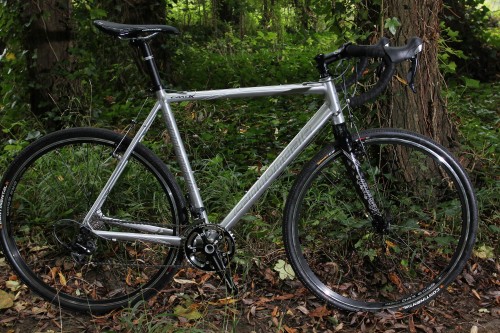
In these hydroformed times, the CAADX is understated in appearance. There's plenty of tube shaping, but it's all subtle stuff – ovalised and flared down tube, a bit of a flare at the front of the top tube and so on. The stays are slender with a gentle curve when viewed from above. At the bottom of the frame is a bottom bracket shell sized for a BB30 setup. BB30 is gaining ground, although it's not a common sight on relatively inexpensive bikes. The oversized spindle certainly has stifness advantages, although the big shell has the practical benefit of allowing you to use any of the currently-available BB standards with the use of appropriate adaptors.
The head tube takes a semi-integrated headset and is reinforced top and bottom. It also carries the tidy spherical cable stops. With Shimano's 105 levers having gone to fully-concealed cables, the bend of housing between the centre of the bars and the forward-positioned stops looks uncomfortably tight, but didn't present any issues in use. A pair of in-line cable adjusters on those bits of cable make on-the-fly gear tuning a theoretical possibility, but good luck reliably getting hold of the right one while riding. The old exposed gear cables coming off the hoods may have looked untidy, but you could tell which cable was which.

There's a trend in cyclocross bikes to shape the top tube for comfortable shouldering. Cannondale has eschewed this, though. The CAADX top tube is gently ovalised but not flattened or pocketed underneath. We certainly don't have a problem with that – CX bikes don't usually get shouldered for long enough for it to make a difference. Plus which, it's cyclocross racing, it's not meant to be comfortable...
Elegant forged dropouts include a replaceable derailleur hanger and rack mounts, with associated bosses living at the top of the seat stays. There aren't any separate mudguard eyes, so you'll have to double up at the dropouts to run 'guards. Occasionally you'll encounter bikes with rack- and 'guard-ready frames but boss-free forks, but Cannondale's carbon-bladed Ultra X fork has stealthy eyes hidden away at the dropouts and a suitable hole in the crown. There are also two pairs of bottle bosses.

Cannondale always used to be known for ultra-smooth, filed welds that gave its frames the flowing look usually associated with fillet brazing, rather than the "toothpaste" welds commonly associated with aluminium. Those days are gone, but Cannondale now uses a double-pass welded technique that leaves a smoother look that usual. The frame has a rather lovely brushed finish under the lacquer, offset by the largely black parts.
When it comes to components, the clue's in the name of the CAADX 105 – the general theme is Shimano's 10spd 105 groupset, with some tweaks around the edges. The most obvious departure is the chainset. Shimano doesn't offer a chainset that'll fit the Cannondale's BB30 bottom bracket shell directly, so an FSA Gossamer 36/46 setup goes in instead. No complaints there – the actual arms don't have the monster stiffness to match up to the 30mm spindle, but BB30 is a highly future-proof setup so come upgrade time you've got the choice of, well, everything.

Also not present in the 105 group are the 'cross staple of cantilever brakes. Brake maker Tektro must be loving the current mainstream CX surge – it seems to be getting the lion's share of spec on entry- and mid-level bikes. Cannondale has opted for traditionally-shaped wide-profile cantilevers for the CAADX. The sticky-out arms seem a little out of place on the otherwise sleek bike, but they've got leverage on their side. The design does mean using very long straddle wires, which leads to more stretch, but the brakes work well enough. Brake cable stops are integrated into the headset at the front and the seat collar at the back.
Getting most of a Shimano 105 groupset at this price is impressive stuff – much of the sub-£1k competition is mostly Tiagra, and you'd expect to have to go up a price point for 105. 105 is, of course, a 10 speed setup. Conventional wisdom would have it that more closely-spaced sprockets and narrower chains aren't ideal for mud, but pro 'crossers have been racing on 10 speeds for years. Yes, they've got people cleaning their bikes every lap, but if it didn't work in mud they wouldn't be using it. It's undeniably a little more sensitive to adjustment and cable contamination, but anything that would actually clog up a 10spd cassette would make a nine or eight pretty unhappy too.

The combination of 12-25 10spd cassette and 36/46 chainrings gives a spread of gears that's respectably healthy but won't suit all of the potential buyers. CX racers often favour more closely-spaced chainrings to avoid cadence-interrupting big jumps (and because they run up steep hills anyway). Recreational riders or tourists may find a 36/25 bottom end a bit chewy, especially off-road, while fast commuters are likely make use of something a bit taller than 46/12 at the top. There are always going to be areas of compromise on a bike like this that's trying to hit several different targets, though, and your preferred gearing is almost certainly only the odd chainring or cassette swap away.
Also clearly aiming to be most things to most people are the tyres. Continental's Cyclocross Speed tyres have a file tread down the centre and somewhat minimalist knobs on the sides. They're designed for racing on hardpacked or frozen surfaces, upon which they're fast-rolling. Not surprisingly, they're also OK on the road, although you'll be better served by a road tyre if all your riding is on Tarmac. If you're looking at a mixed-surface commute you'll be happy. Any off-road ride involving mud or loose surfaces will be more challenging, though. The Speeds are actually surprisingly capable in such conditions if you're paying attention, but still not a patch on a knobbly tyre. On the upside, the tyres have a tall section and plenty of volume, so you can expect a comfy ride.
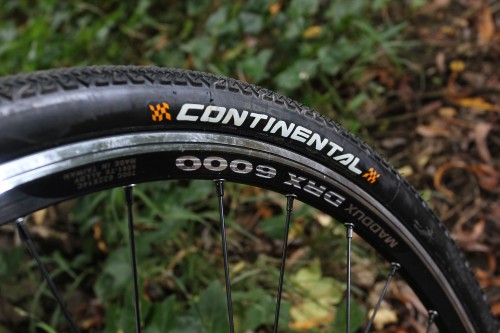
Cannondale has had to let something give way to accommodate the frame and transmission at this price point, and the most obvious victim is the wheelset. There's nothing fundamentally wrong with it, but the Formula hubs, Maddux rims and plain-gauge spokes are all slightly portly and the cumulative effect is a somewhat unresponsive pair of wheels. They're robust, though, and we'd happily use them until they wore out. Regular racers would probably want to shed some weight sooner rather than later in the interests of acceleration. At around 10kg (depending on size and pedal choice) the overall weight is certainly acceptable, though.
According to Cannondale the CAADX frame has a slightly taller head tube and more relaxed head angle than its race-oriented carbon fibre SuperX brother, although the angles appear to be the same on paper. It's notably high at the front though, which is a mixed blessing. You can see where you're going, which is always useful. And combined with the shallow-drop bars all possible hand positions are readily accessible. The slight downside is that the resulting rearward weight distribution can make the front wheel a bit washy in slippery conditions and you find yourself having to work a bit to keep the front down on steep climbs. With a 36/25 bottom gear there are ratios low enough to tackle fairly prodigious inclines but if you don't concentrate on hunkering down over the bars you occasionally pop the front wheel up. Obviously these idiosyncracies are easy to ride around, and there's scope to drop the bars with spacer rejigglement and/or stem flipping, but it's something to be aware of.
The carbon fork majors on stiffness and steering accuracy rather than comfort, and there's not much give in the oversized bars either, leaving the tyres doing most of the work. No complaints there – it's hard to make a compliant fork that's not also a bit fluttery. It's fine on the road, and off-road we'll take accuracy and lack of flutter every time.
Verdict
The Cannondale CAADX 105 delivers a fine ride. The frame and fork fundamentals are excellent and – in contrast to Cannondales of years gone by – the component spec is very competitive for the money. The wheels are something of a weakness compared to the rest of the bike, but there's only so much money to go around. The Cycle to Work-friendly cyclocross/all-rounder market is a crowded one, packed with bikes trying to be all things to all riders. The CAADX feels less compromised than most, rides well and looks great. Definitely one for the shortlist.
road.cc test report
Make and model: Cannondale CAADX 105
Size tested: 56
About the bike
State the frame and fork material and method of construction. List the components used to build up the bike.
* Frame CAADX Cyclocross, Optimized 6061 Alloy, BB30
* Fork Cannondale Ultra X, Carbon Blades, 1-1/8"
* Rear Shock n/a
* Rims Maddux DRX 6000
* Hubs Formula RB-51, RB-52
* Spokes Stainless Steel
* Tires Continental Cyclocross Speed, 700x35C
* BottomBracket FSA BB30
* Chain Shimano 105
* Rear Cogs Shimano 105, 12-25
* Front Derailleur Shimano 105, Clamp 34.9 mm
* Rear Derailleur Shimano 105
* Shifters Shimano 105
* Handlebars Cannondale C3 Compact
* Stem Cannondale C4, 31.8mm
* Headset CAADX, SI, 1⅛"
* Brakes Tektro CR720, black
* Brakelevers Shimano 105
* Saddle Cannondale Stage crmo Rails
* Seat Post Cannondale C3, Alloy, 31.6mm, 300mm
* Extras n/a
* Crank FSA Gossamer BB30, 36/46
Tell us what the bike is for, and who it's aimed at. What do the manufacturers say about it? How does that compare to your own feelings about the bike?
Cannondale pitches the CAADX as an all-rounder - race, commute, adventure. It says it's "supremely versatile". This is what manufacturers usually say about bikes like this, and as per usual it's mostly true but with the ever-present danger of falling between various stools.
Frame and fork
Overall rating for frame and fork
8/10
Tell us about the build quality and finish of the frame and fork?
Cannondale was a pioneer of aluminium frames - a lot of experience has ended up in the CAADX. It's smooth, double-pass welds rather than super-smooth fillet-style sanded welds like the old days, though. Fork looks quite slender but doesn't judder. And there are mudguard eyes at both ends.
Tell us about the materials used in the frame and fork?
The frame is good old 6061 aluminium as used by Cannondale for ever. There's a bit of hydroforming and shaping but nothing too gratuitous - it's a clean-looking frame. Fork has carbon legs but an alloy steerer.
Tell us about the geometry of the frame and fork?
Cannondale says the CAADX is slacker than the race-oriented SuperX, but on paper it isn't. It's shorter, though, with a taller front end, so somewhat less aggressive.
How was the bike in terms of height and reach? How did it compare to other bikes of the same stated size?
With a 57.5cm effective top tube on a 58cm frame, it's not overlong. Out of the box the bars are pretty high, which is comfy and lets you see where you're going but makes the front a bit light and sketchy. I'd probably take a couple of spacers out or flip the stem for fast off-roading, but for commuting it's fine as it is.
Riding the bike
Was the bike comfortable to ride? Tell us how you felt about the ride quality.
Notably comfy at the back, probably on account of the big tyres. The stays are fairly slender, but the seatpost is a 30.9mm one.
Did the bike feel stiff in the right places? Did any part of the bike feel too stiff or too flexible?
Oversize bars and a stiff fork are an interesting contrast to the conventional bars and twangy fork I'm used to - better for hauling, but more clattery.
How did the bike transfer power? Did it feel efficient?
On the upside, the tyres roll fast and the frame's suitably unyielding under power. The weight holds it back a bit - it's a good weight for the money, but a couple of pounds more than a race-oriented bike. Rolls along spendidly, though.
Was there any toe-clip overlap with the front wheel? If so, was it a problem?
Nope
How would you describe the steering? Was it lively, neutral or unresponsive? On the lively side of neutral.
Tell us some more about the handling. How did the bike feel overall? Did it do particular things well or badly?
On steep ups the front end was a bit light, and you have to work a bit to keep the front gripping in turns, but that'd be sorted by dropping the bars a bit and/or changing the front tyre.
Which components had the most effect (good or bad) on the bike's comfort? would you recommend any changes?
There's plenty of volume in the tyres, which helps a lot. The 10spd Ultegra STI hoods are pretty fat, which might be an issue for the smaller of hand.
Which components had the most effect (good or bad) on the bike's stiffness? would you recommend any changes?
Hard to say. The FSA BB30 crank is an obvious candidate, but the big axle is offset by the slender arms.
Which components had the most effect (good or bad) on the bike's efficiency? would you recommend any changes?
If you wanted to race seriously, lighter wheels. And knobblier tyres, unless the ground's hard.
Rate the bike for efficiency of power transfer:
8/10
Rate the bike for acceleration:
7/10
Not race-sprightly, but perfectly acceptable
Rate the bike for sprinting:
7/10
Rate the bike for high speed stability:
8/10
Rate the bike for cruising speed stability:
8/10
Rate the bike for low speed stability:
8/10
Rate the bike for cornering on descents:
8/10
Rate the bike for climbing:
7/10
Consider flipping the stem for better weight distribution
The drivetrain
Rate the drivetrain for performance:
8/10
Rate the drivetrain for durability:
8/10
Rate the drivetrain for weight:
8/10
Rate the drivetrain for value:
8/10
Tell us some more about the drivetrain. Anything you particularly did or didn't like? Any components which didn't work well together?
The 10spd setup proved surprisingly tolerant of mud, but it needs fine adjustment and doesn't like cable contamination.
Wheels and tyres
Rate the wheels and tyres for performance:
7/10
Fast-rolling tyres
Rate the wheels and tyres for durability:
7/10
Rate the wheels and tyres for weight:
6/10
A little on the portly side
Rate the wheels and tyres for comfort:
8/10
Big tyres
Rate the wheels and tyres for value:
7/10
Tell us some more about the wheels and tyres.Did they work well in the conditions you encountered? Would you change the wheels or tyres? If so, what for?
The Conti CX Speed tyres are fast-rolling, comfortable and surprisingly effective on loose ground. Fine on the road, too. If you're doing a bit of everything stick with them. For muddy racing you'd want something a bit spikier, and if you're commmuting on the road a pure road tyre would be easier going.
Controls
Rate the controls for performance:
7/10
Rate the controls for durability:
8/10
Rate the controls for weight:
8/10
Rate the controls for comfort:
8/10
Tell us some more about the controls. Any particularly good or bad components? How would the controls work for larger or smaller riders?
If you've got small hands the bar tops and lever hoods might be uncomfortably girthsome.
Anything else you want to say about the componentry? Comment on any other components (good or bad)
Very traditionally-styled brakes, if you like that sort of thing.
Your summary
Did you enjoy riding the bike? Yes
Would you consider buying the bike? Definitely a strong contender in the £1k market
Would you recommend the bike to a friend? It should be on the shortlist, yes
Rate the bike overall for performance:
8/10
Rate the bike overall for value:
8/10
Anything further to say about the bike in conclusion?
As with most bikes in this category, you'll probably want to change some bits to get it just right for what you want (guards for commuting, lighter wheels for racing etc). As it is it's a fine recreational bike and occasional racer with stacks of upgrade potential.
About the tester
Age: 37 Height: 6ft Weight:
I usually ride: My best bike is:
I've been riding for: Over 20 years I ride: Most days I would class myself as: Novice
I regularly do the following types of riding: cyclo cross, sportives, general fitness riding, fixed/singlespeed, mtb, Track; to the shops; with the kids
Latest Comments
- Laz 16 min 58 sec ago
I used to daily 1hr sufferfests on indoor rollers, I drank a fair bit of water before during, and after- I noticed my sweat wasnt stinging in my...
- matthewn5 49 min 31 sec ago
I did the four windows on my Victorian flat. I replaced the parting beads (between the panes) and the staff moulds with new timber ones that have a...
- Rendel Harris 3 hours 18 min ago
Well, I don't have any insight into how all consuming being a professional cyclist is and so how much you have to put your faith in your advisors,...
- Hirsute 3 hours 59 min ago
In the comments "Was it due to icy conditions? "
- chrisonabike 4 hours 4 min ago
Shurely "Place with large concentrations of bikes (and presumably thriving second hand market) in bike theft hotspot shock"?...
- Hirsute 4 hours 6 min ago
Finding solutions to US school drop off: Our school has 2 VIP parking spots they auction off at their fundraiser. So, I got one 😁 - and made it...
- slc 6 hours 40 min ago
Marsh lane was unchanged on Friday - I don't think the contractors have been back since the protest.
- chrisonabike 7 hours 16 min ago
She did say (in comment) they'd suggested to the council to make this access and emergency vehicles only and the council said no....
- S.E. 1 day 16 min ago
My guess is that they sell mainly on the German market - feel free to correct me. That might explain why they are not "pushing" their products,...




















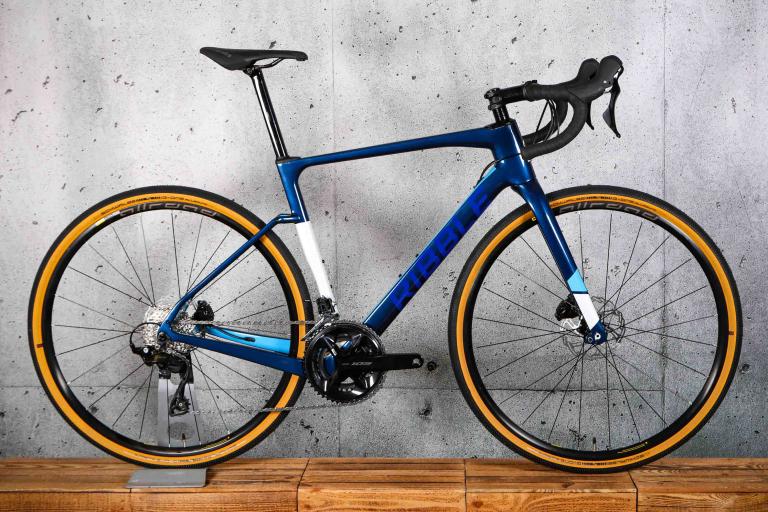
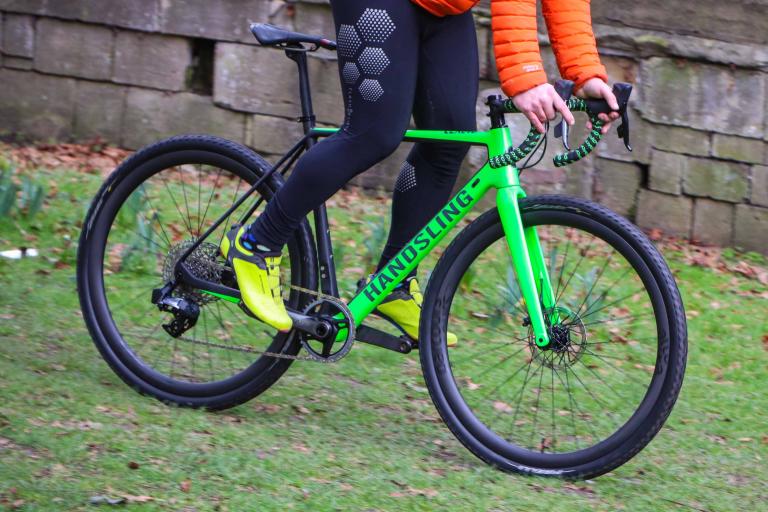

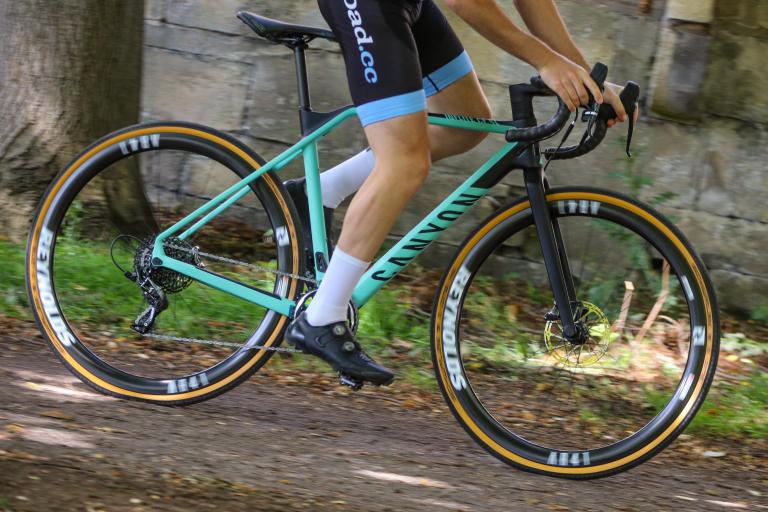
Add new comment
5 comments
I've been looking at one of these! Looks tempting, I know somebody who works in a sportsshop so Ill get 40%
How would you compare it to Giant TCX2?
Any immidiate small upgrades I should consider if I go for this one? I'd probably ride it abour 80% on road, and 20% light offroad.
Oh.. And wait for the 2012 version, or will the difference be minimal?
Great review, this bike really hits the race/utility balance for me.
You say you did not experience the dreaded 'judder' which plagues most cantilever-braked CX forks under heavy braking. Can you tell us how much you weigh? I would need a 58cm frame and weigh about 85kg. I may be able to flex the fork more than you under heavy braking!
Also, any chance of uploading photos of the chainstay-tyre clearance, seatstay-bridge eyelet and chainstay-bridge eyelet? No worries if you don't have those pics. I am interested in these features for fitting 700x35mm tyres (singletrack trails) or mudguards (road touring) at some time in future.
Fair point. I have fairly big hands and didn't have a problem, but certainly something to look out for. Mind you, now you mention it, it's probably worth suggesting that if you're keen to race you should try grabbing the downtube in the shop anyway - it's pretty massive towards the front, if you've got smallish hands it might prove a bit fat for a comfortable grip.
All Cannondale's 2011 CX bikes have down-tube routing, but the carbon SuperX models have lower-profile stops positioned further down the down tube rather than on the head tube like the CAADX, so the cables run closer to the tube.
Thorough review but one thing that occurs to me looking at the pictures is the gear cable routing being a little problematic for racers. Down tube routing is not a huge issue with modern sealed cable sets but on the CAADX105 there appears to be a huge gap between cable and downtube which will likely catch fingers when picking up to shoulder the bike. Looks like they've just kept the same cable stop arrangement from their road frames which is strange given that their higher end CX bikes use more conventional top tube routing.
Thanks for the review – mines on order.